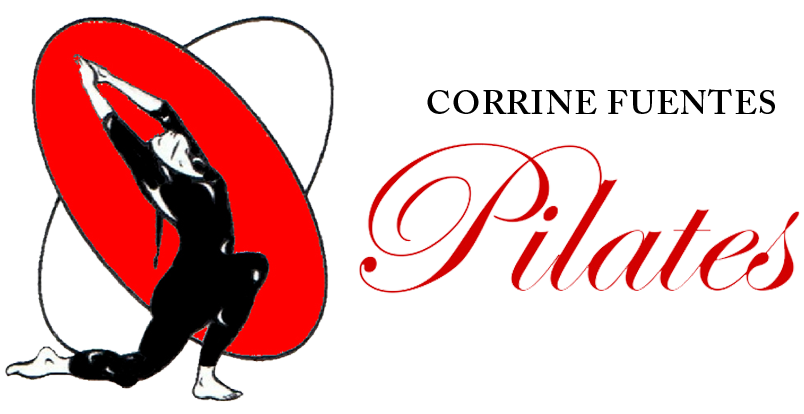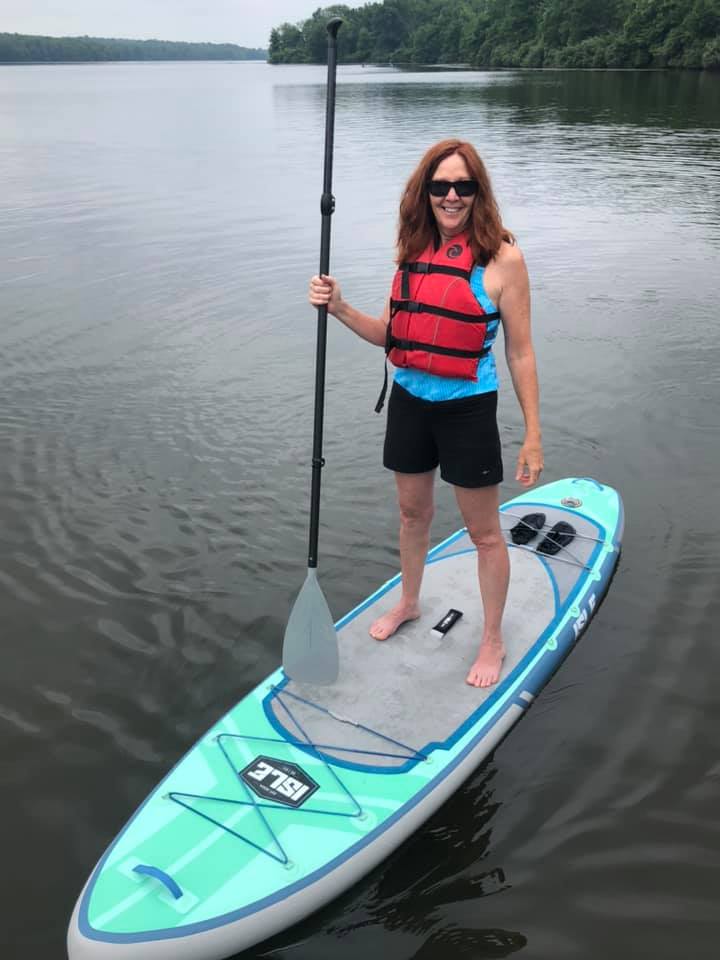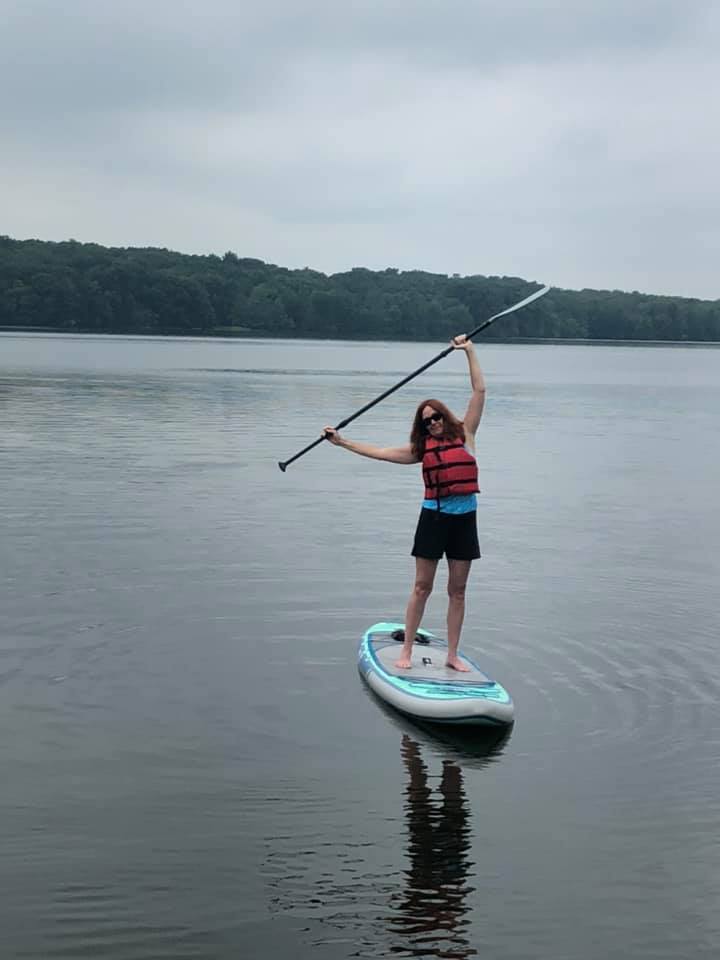Stand Up Paddle Board Pilates
When I recently began practicing and discovered my love of stand-up paddle boarding, I quickly experienced how Pilates has enabled me to access my core in order to balance and remain standing on the board.
As an integrative system of exercise, Pilates provides a head-to-toe workout that simultaneously lengthens and strengthens the muscles while releasing the joints to create balance and stability. A well-integrated Pilates class helps us stay focused on proper form, breathing and execution, allowing for the mind-body connection that is so important in all sports — including stand-up paddle boarding.
As one would expect, balance is key in stand-up paddle boarding, and finding that balance involves some thought as to what muscles are working to maintain correct posture and understanding how quickly the transference from side to side takes place.
Starting from the bottom: the feet should be planted, with open toes and relaxed insteps and ankles that are able to absorb the constant shifting of weight as the board naturally sways. From the calves to inner thighs — all work to stand and remain upright. The use of quadriceps and hamstrings will help keep the knees and lower back stable as you paddle. You’ll want to be mindful of the obliques in order to keep your opposite side from twisting too far from the paddle side, which will cause instability. When the pelvis is stable and aiming to the front of the board, strong gluteus medius, piraformis and oblique muscles not only help maintain the correct position, but they also help alleviate gripping in the low back, hamstring and even the feet, which can later lead to discomfort in those areas.
Once balance is obtained and the core is holding you stable, understanding that the core and back are actually doing most of the work in the paddling portion of the sport is key to not fatiguing the shoulders too quickly. Rather than relying on the arms or shoulders for a powerful stroke, a slight upper body twist to the stroke side and a small dip of the shoulder will recruit the obliques and abdominal muscles in order to pull your body forward to the paddle which has been planted toward the front of the board. Paddling with the core in mind also give the arms the freedom to transfer the oar side to side while maintaining balance. By pulling toward the paddle, rather than pulling the paddle back through the water, you access back muscles — including the trapezius — allowing the shoulders to act as a pivot to swing the paddle side to side without using them as a foundation of power for the stroke. The shoulders will definitely get a good workout with the constant lifting, pivoting and dipping that happen as you paddle board.
As in any sport, the use of correct muscles leads to accuracy and aids in injury prevention. A practice such as Pilates — where you are being asked not only to move but to stabilize as you think about what and how you are moving — can help quickly improve both your performance and focus in all of your physical activity.
I have had several clients come to a paddle board session who have told me how much they enjoyed their first experience on a paddle board because of my ability to guide them through a session by helping them access the muscles they need. Others have enjoyed a refreshing day out on the lake doing a Pilates session on the board. Either way, the sessions are fun, rewarding, and can be made as challenging or relaxing as you are up for.



